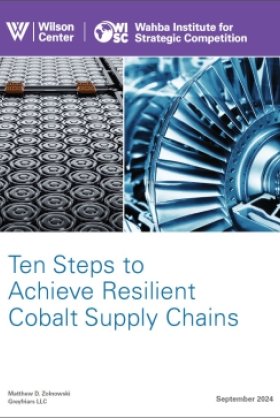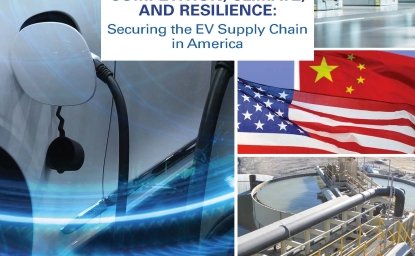Ten Steps to Achieve Resilient Cobalt Supply Chains


Upon commissioning this report on the cobalt supply chain, the Wahba Institute for Strategic Competition at the
Wilson Center stressed the need for practical recommendations for US Government action that (a) would have a
meaningful impact and (b) are well-within the realm of the possible. There is no shortage of policy reports stating, for example, “The preponderance of global cobalt is mined the Democratic Republic of Congo” and “Most global cobalt is ‘processed’—however defined—in China.” If these were the core takeaways from this work, then it would have failed.
Instead, cobalt is a tale of two markets: the “West” and the People’s Republic of China. In the former, we find
almost five decades of government and industry inertia, which has only recently begun to shift. In the latter, we find an industry-government dynamism deliberately aimed to leap-ahead of the incumbency advantages of the former. In short, cobalt is one chapter in this century’s sharp-elbowed geopolitical marathon, in which the West and China are simultaneously supplier, customer, competitor, investor, innovator, and security challenge.
Some portions of this cobalt story are unlikely to change, such as the near-centennial dominance of cobalt production in the Democratic Republic of Congo and the prevalence of security themes in US Government cobalt policy—from 1970s-era regulations on superalloy production to more recent ones on “foreign entities of concern”. In other areas, such as critical mineral diplomacy or investment program execution, the initiative rests exclusively with the US Government.
With that in mind, this work provides an overview of cobalt market, how and by whom it is produced as well as
where and why it is consumed. This is followed by an evaluation of the role of industrial policy and price volatility in the cobalt market, highlighting China, Indonesia, and the United States. These data serve as the foundation for ten (10) recommendations, each of which has an Executive Branch component that may be implemented immediately, with follow-on supporting actions for the Congress in future authorization and appropriation cycles:
Recommendations
1. Maintain Long-Term Stability in Minerals Policy
2. Keep “National Defense” Broad to Achieve Genuine Resilience
3. Integrate Government Incentives towards Industrial Outcomes
4. Attract Highly Qualified Foreign Talent to “National Priority Projects”
5. Increase Cobalt Stockpiling to Ensure Emergency Access
6. Position the US Government on One Side of the Transaction
7. Leverage Trade Actions to Expand Access to Resilient Supply
8. Amend Reliable Sourcing Rules to Support Domestic Production
9. Embrace Joint Action with Allies
10. Explore a “Lease-to-Recycle” Model to Reduce EV Adoption Cost
Author

President, Greyfriars LLC

Wahba Institute for Strategic Competition
The Wahba Institute for Strategic Competition works to shape conversations and inspire meaningful action to strengthen technology, trade, infrastructure, and energy as part of American economic and global leadership that benefits the nation and the world. Read more






